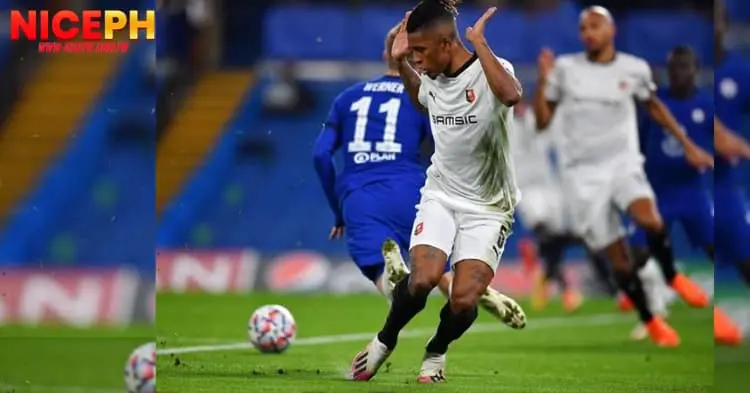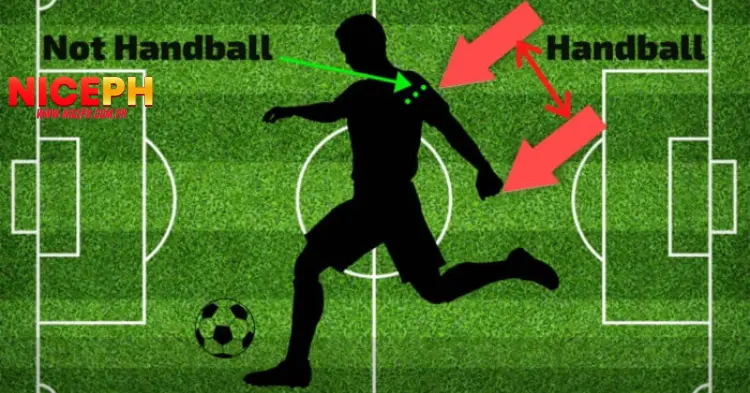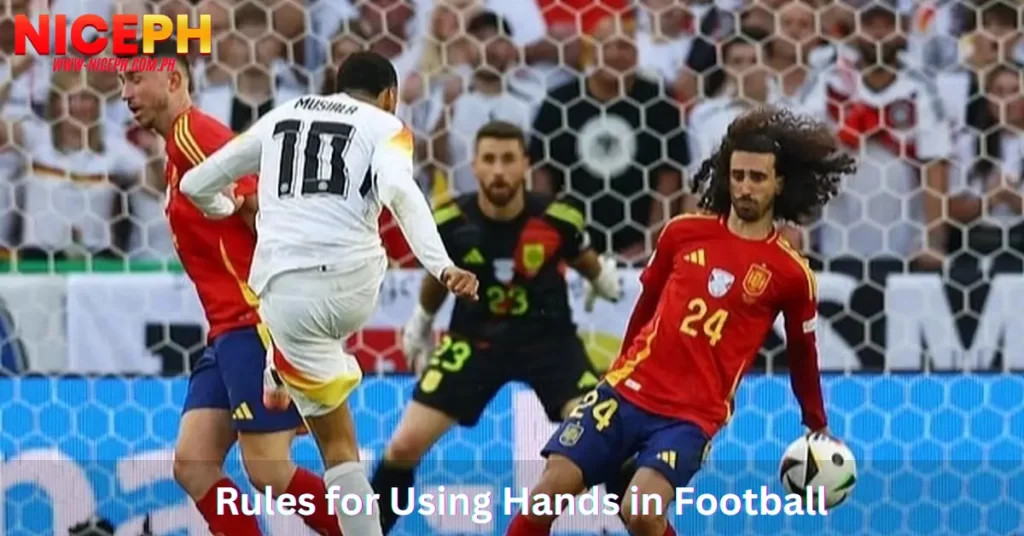Overview
Handball in football is one of the most common violations, often leading to heated debates during matches. Whether intentional or accidental, any handball is treated equally and penalized fairly.
Players are prohibited from using their hands during play, except for goalkeepers within the penalty area. If the ball touches a player’s hand, it is considered a foul, and the opposing team is awarded a free kick.
However, handball situations are not always straightforward and frequently spark controversy, especially in modern football.
FIFA has revised and supplemented these rules multiple times, but these changes have only blurred the line between lawful and unlawful actions, making it harder to distinguish between the two. The introduction of Video Assistant Referee (VAR) technology has further intensified the debates.
Let’s explore FIFA using hands rules with NicePh in detail below.
Handball and FIFA’s Interpretation

The International Football Association Board (IFAB) is responsible for drafting, overseeing, and amending the rules of football. For years, IFAB has tried to define handball violations but has yet to establish a clear-cut standard. The latest update to this rule came before the 2022/23 season, which states:
A player commits a handball offense if they:
- Deliberately touch the ball with their hand/arm, such as moving the hand/arm towards the ball.
- Handle the ball when the body is unnaturally enlarged. A player is considered to have made their body unnaturally larger if their hand/arm is positioned away from the body or misaligned with the bottom of their armpit.
Additionally, a goal will not be awarded if:
- The ball directly touches a player’s hand/arm, even unintentionally, including that of the goalkeeper.
- The ball touches a player’s hand/arm, even unintentionally, immediately before a goal is scored.
Acts Considered Handball Violations in Football
Under basic football rules, handball violations on the field include:
- Using the hand to catch or control the ball.
- Intentionally allowing the ball to touch the hand.
- Using the hand to play the ball during gameplay.
- Contact between the ball and the arm (up to the shoulder) within the penalty area.
Such incidents can become focal points of debate, adding drama and excitement to the match. Even outside the penalty area, handball scenarios can be contentious. There are instances where players unintentionally handle the ball due to enthusiasm and misjudgment during play.
When is Handball Not Considered a Violation?
According to the latest handball rules, the following situations are not deemed violations:
- When the ball accidentally touches the player’s hand/arm without affecting an attacking or defensive action.
- When the ball touches a player’s hand/arm during a natural running motion without their intentional interference.
- When the ball touches a player’s hand/arm outside the field of play.
How Are Handball Violations Penalized in Football?
When a player uses their hand to control the ball, particularly within the penalty area, referees apply the rules based on various factors.
First, the referee assesses the player’s intent before making a decision. The penalties depend on the specific situation:
- Accidental handballs may be overlooked without issuing a card.
- Deliberate handballs can result in a yellow card, and if close to the goal, the player might receive a red card.
Other critical factors include the distance between the ball and the player’s hand, as well as the speed of the ball. If the situation occurs rapidly, leaving no time for the player to react, the referee makes a judgment to ensure fairness.
VAR has become a crucial tool in analyzing handball scenarios. It provides referees with a clearer and more detailed view of critical moments. If VAR detects a handball violation that the referee missed, the decision may be reviewed and adjusted accordingly.
=> Read more: Top 10 Largest Stadiums in the World by Capacity
Does Intent Really Matter?
According to the rules, intent is irrelevant when defending if the player has unnaturally expanded their body while handling the ball. Although some leagues provide additional guidelines for referees to consider intent, the universal rule does not.

The rules explicitly state that intent is not significant: the phrase “when a player makes their body unnaturally larger” highlights that certain movements inherently risk a handball penalty, even if unintentional. The rules specify:
“By having their hand/arm in an [unnatural] position, players risk the ball hitting their hand/arm and being penalized.”
Furthermore, the law includes the phrase “even if accidental” to emphasize that any unnatural handball action, whether intentional or not, should be penalized.
In summary, intent does not play a role in determining handball violations and should not influence the referee’s decision. The only exception is when a player deliberately uses their hand to prevent a goal.
Two Key Exceptions to Handball Rules
- Defensive Exceptions: A specific exception is made when the handball occurs as a result of an unavoidable situation, such as a collision, loss of balance, or an uncontrollable circumstance. In such cases, it is not penalized.
This exception often applies to defenders attempting to block the ball. For example, a sliding tackle typically requires a player to use an arm for balance, making contact with the ball under these circumstances “justifiable.”
- Attacking Exceptions: For attacking players, intent is irrelevant when scoring a goal. If the ball touches any part of the hand/arm before the goal, the goal is disallowed. However, during the buildup to a goal, if a non-scorer’s hand touches the ball, referees must evaluate intent before deciding whether to disallow the goal.
=> Read more: Al Rihla – The Most Unique Ball in History
=> Read more: Throw-In Bets: Effective Betting Strategies to Maximize Profits
How Are Handballs in the Penalty Area Penalized?

Handball violations in the penalty area are assessed based on both subjective and objective factors, such as player intent, situational context, and the distance between the ball and the hand. Referees must quickly apply specific rules to make a decision.
Some common handball rules in the penalty area include:
- If a player unintentionally avoids the ball but it still touches their hand, it may or may not be penalized.
- If the ball touches a player’s hand outside the penalty area, the opposing team is awarded a free kick. Inside the penalty area, a penalty kick is awarded.
Does it count as handball if the ball hits another body part first?
According to current interpretations, if the ball touches a player’s hand, they are penalized. However, different leagues may apply this rule differently.
For example, under Premier League regulations before the 2024/25 season, if the ball first hits another body part before deflecting onto the arm, such instances are deemed “justifiable”, and the player may not be penalized.
=> Are you looking for a reputable and top-quality casino for betting? Try our partners: Tapwin 2024.
Conclusion
The above information provides a detailed explanation of handball violations in football. We hope the insights shared by NicePH help players better understand the handball rules and avoid unnecessary penalties during matches.

